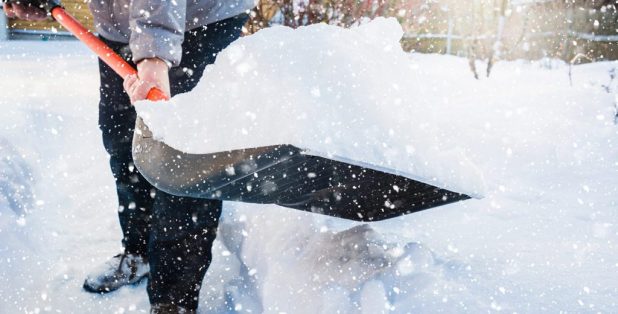The Old Farmer’s Almanac is predicting that this winter is going to be one of the longest and most frigid we’ve seen in many years. In some areas of the country, the forecast also calls for significant amounts of snow, which means plenty of shoveling for those without snowblowers or a plow service.
Cold weather alone can be rough on the joints; it’s thought that lower barometric pressures, which allow joints to expand, may be one cause. Add vigorous snow shoveling to the mix and severe joint pain can be the unfortunate result. But do not despair; there are a number of things you can do to protect your joints while shoveling.
Dress appropriately and use a good shovel: Dress warmly and in layers to keep your joints and muscles warm, which will make them less susceptible to injury. Removing layers as you warm up keeps you from overheating. An ergonomically designed shovel can also reduce the chance of injury.
Warm up before beginning to shovel: Think of shoveling as a sport, which isn’t far-fetched because it can be very aerobic and use a lot of muscle strength: March in place to get your blood flowing. Then do some side bends, trunk twists (with your hands on your hips), and cat stretches. To do a cat stretch, get on your hands and knees, then round your back toward the ceiling. If you get tired while shoveling, take a break and consider stretching more before resuming shoveling.
Form matters: When you lift anything heavy, it’s important to keep good posture, bending from your knees not from your waist, with your feet shoulder width apart, to load the snow on to your shovel. Walk to the snowbank and dispose of the snow rather than throwing the snow over your shoulder as that can strain your shoulders and back. Engage your core when dumping the snow. Consider pushing the snow much of the way to the snowbank.
Shovel in stages: With a large snowstorm, plan on shoveling multiple times throughout the storm so you tackle a few inches at a time to ensure your load is not too heavy.
If you overdo it, there are several things you can do to alleviate joint pain:
- Support the joint with a brace or wrap
- Rest the joint and avoid activities that cause you pain
- Ice the joint for about 15 minutes, several times each day
If the pain persists, consult a joint specialist. Check out our find a doctor tool.




